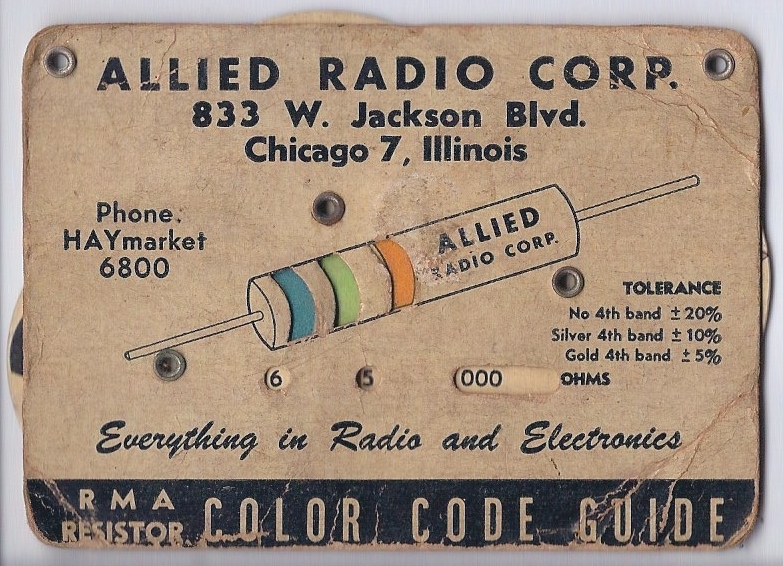|
Electronic Color Code
An electronic color code or electronic colour code (see spelling differences) is used to indicate the values or ratings of electronic components, usually for resistors, but also for capacitors, inductors, diodes and others. A separate code, the 25-pair color code, is used to identify wires in some telecommunications cables. Different codes are used for wire leads on devices such as transformers or in building wiring. History Before industry standards were established, each manufacturer used their own unique system for color coding or marking their components. In the 1920s, the RMA resistor color code was developed by the Radio Manufacturers Association (RMA) as a fixed resistor coloring code marking. In 1930, the first radios with RMA color-coded resistors were built. Over many decades, as the organization name changed (RMA, RTMA, RETMA, EIA) so was the name of the code. Though known most recently as EIA color code, the four name variations are found in books, magazine ... [...More Info...] [...Related Items...] OR: [Wikipedia] [Google] [Baidu] |
American And British English Spelling Differences
Despite the various English dialects spoken from country to country and within different regions of the same country, there are only slight regional variations in English orthography, the two most notable variations being British and American spelling. Many of the differences between American and British English date back to a time before spelling standards were developed. For instance, some spellings seen as "American" today were once commonly used in Britain, and some spellings seen as "British" were once commonly used in the United States. A "British standard" began to emerge following the 1755 publication of Samuel Johnson's ''A Dictionary of the English Language'', and an "American standard" started following the work of Noah Webster and, in particular, his '' An American Dictionary of the English Language'', first published in 1828. Webster's efforts at spelling reform were somewhat effective in his native country, resulting in certain well-known patterns of spelli ... [...More Info...] [...Related Items...] OR: [Wikipedia] [Google] [Baidu] |
